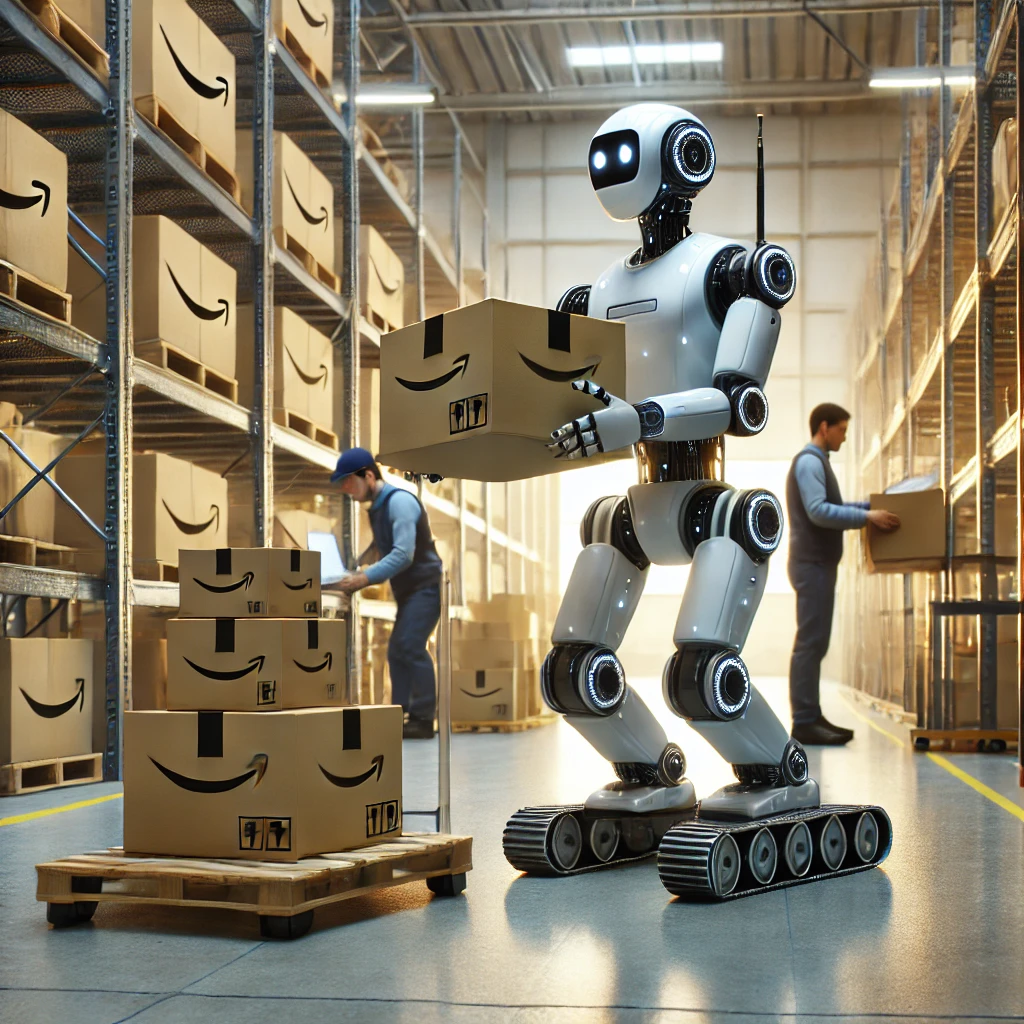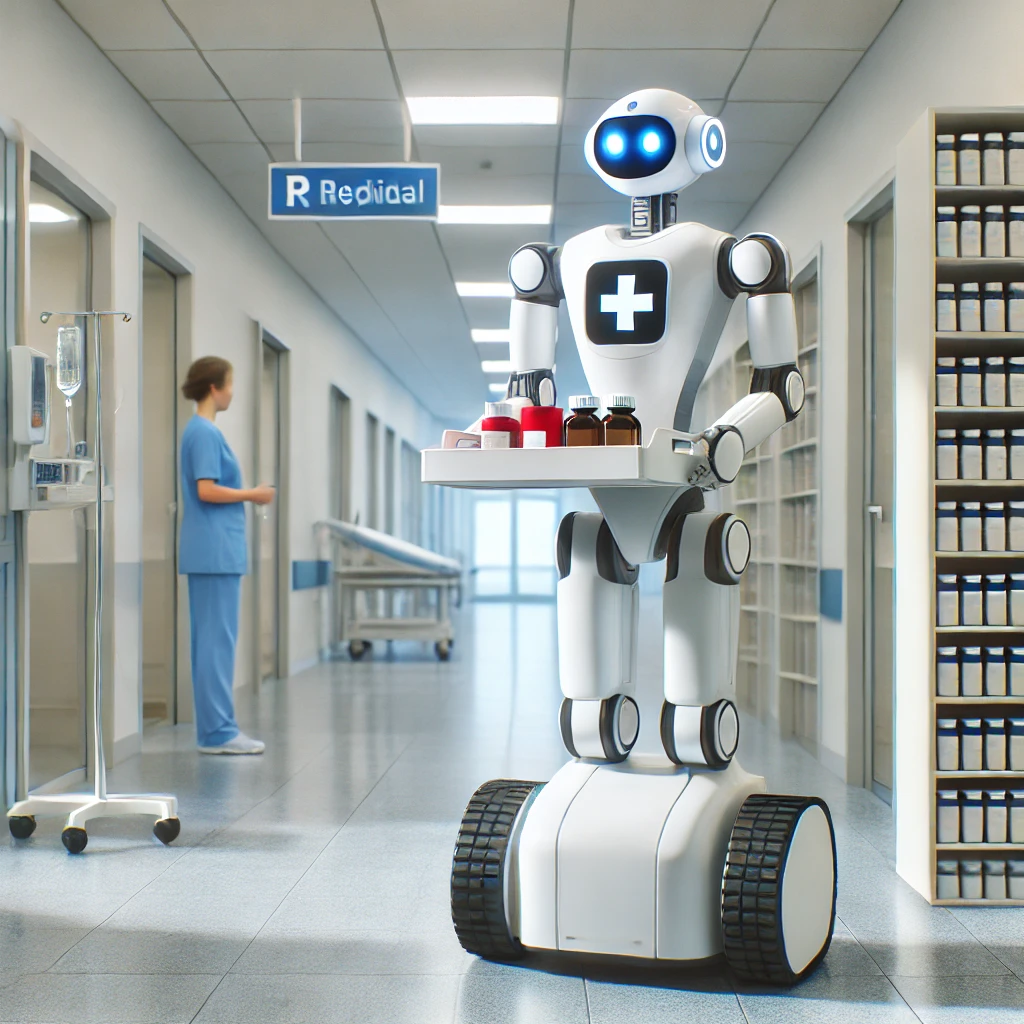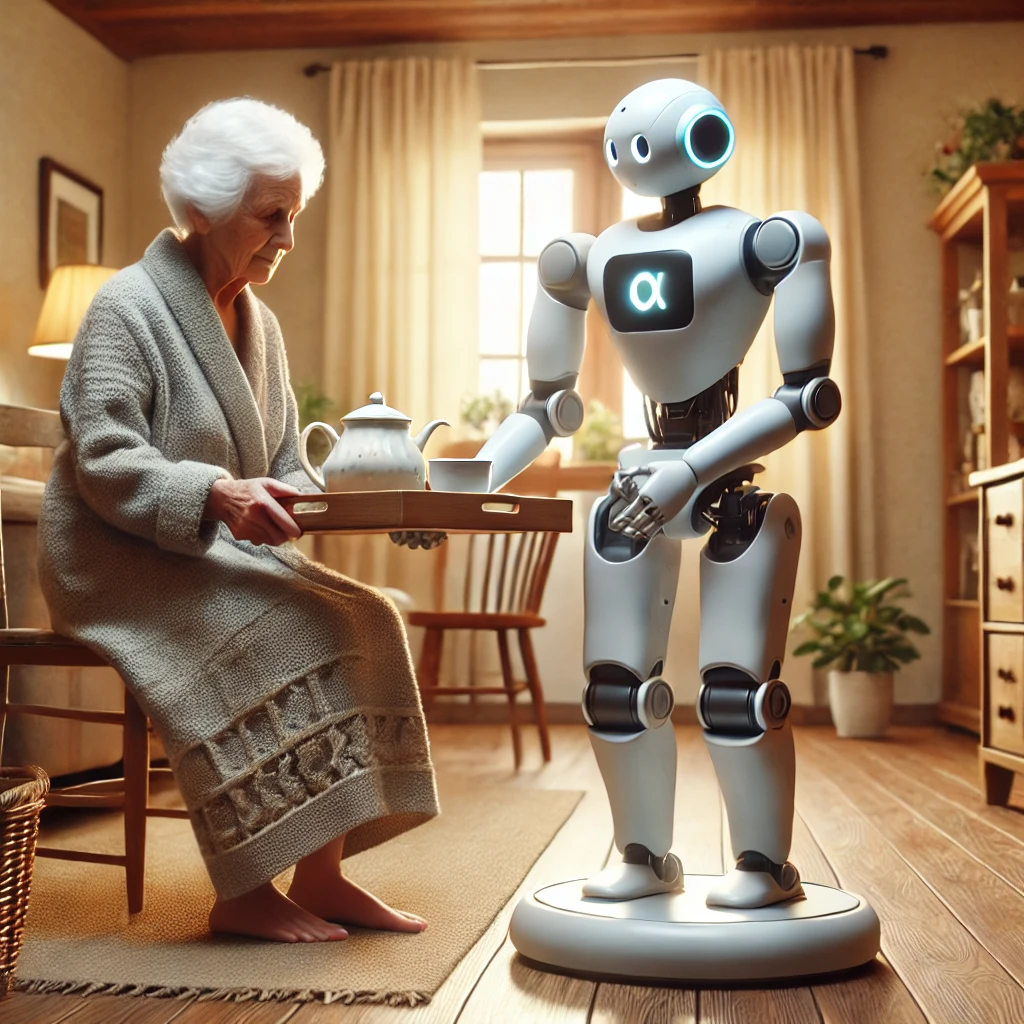Adverts
Artificial intelligence (AI) is increasingly present in our lives, transforming the way we interact with technology and each other.
The advancement of robots and automated systems is reshaping entire industries, from healthcare to entertainment, promising a future full of innovations that were previously only imagined in science fiction films.
Adverts
This impact isn’t just limited to large corporations; AI is infiltrating our daily lives in surprising and accessible ways.
Harnessing the power of artificial intelligence is like opening a door to a new world of possibilities. We are already seeing robots performing complex tasks ranging from delicate surgeries to optimizing logistics processes.
Adverts
However, the future holds even more intriguing scenarios, where the synergy between humans and machines could revolutionize the way we live, work and solve global problems. Human-machine interaction is becoming a vital partnership, with the potential to raise efficiency and creativity to unprecedented levels.
This text aims to reveal the secrets and potential of this disruptive technology, analyzing how AI is integrating into our daily lives and what to expect in the coming years.
With the evolution of algorithms and the increasing learning capacity of machines, understanding the role of artificial intelligence is essential to navigate this sea of technological change. Let's discover together how this revolution is shaping the present and designing the future of humanity. 🌐🤖

The Advancement of Artificial Intelligence in the Current Scenario
As technology advances at a dizzying pace, we’re witnessing a revolution driven by artificial intelligence (AI) that’s transforming our daily lives. From personal assistants like Alexa to complex machine learning algorithms that power content recommendations on streaming platforms, AI is ubiquitous. Science fiction has long predicted a world dominated by robots and artificial intelligence, and while we’re still far from the most dystopian scenarios, the truth is that AI has already begun to significantly impact our everyday interactions.
Today’s AI systems are powering innovations in a variety of areas, including healthcare, transportation, and education. The application of AI in medical diagnostics, for example, is revolutionizing the way we detect and treat diseases, allowing doctors to analyze vast amounts of patient data to identify patterns and make more accurate prognoses. In transportation, self-driving cars are at the forefront, promising safer and more efficient mobility. Education is also benefiting, with platforms that personalize the learning experience to meet individual student needs.
Related articles:
This integration of AI into our daily lives raises important ethical and social questions, from data privacy to the impact on the job market. How do we balance the convenience that AI provides with the need to protect our human rights and values? This is one of the central questions we need to address as we navigate this new technological world.

The Robotic Revolution: Impact and Future Perspectives
Robots, once a mere concept in science fiction stories, are rapidly becoming a reality. With the advancement of robotics, we are seeing the emergence of machines that not only perform repetitive tasks but also interact with their environment in more sophisticated ways. Factories are already using robots to increase efficiency and safety, replacing human roles in dangerous and repetitive environments.
In the near future, domestic robots could become commonplace in our homes, assisting with household chores and providing companionship for the elderly and people with disabilities. In addition, robotics in medicine is rapidly evolving, with surgical robots enabling minimally invasive procedures with pinpoint precision. This not only improves patient outcomes but also reduces recovery times and the risks associated with complex surgeries.
However, the rise of robots also raises concerns about job displacement and the need for workforce reskilling. It is essential that society develops strategies to mitigate the negative effects of this transition, ensuring that automation complements, rather than replaces, human labor.
Artificial Intelligence and Entertainment: Empowered Creativity
The impact of artificial intelligence on entertainment is another fascinating area of exploration. AI is becoming a creative partner, capable of generating original content, from music to film scripts. Through machine learning, algorithms can analyze patterns in works of art, music and film, creating new pieces that resonate with audiences.
In gaming, AI is transforming the player experience by creating more realistic and adaptive NPCs (non-playable characters). These characters can learn and evolve based on player interactions, making each gameplay session unique and immersive. Additionally, AI can help developers create larger, more detailed worlds, optimizing the user experience.
Film production is also being impacted, with AI helping with film editing and special effects creation. Streaming platforms like Netflix and Amazon Prime are using AI to personalize content recommendations, creating a tailored viewing experience for each user. This not only improves audience satisfaction but also expands opportunities for content creators to reach new audiences.
Ethical and Regulatory Challenges of AI
The rise of artificial intelligence also brings with it a number of ethical and regulatory challenges that society needs to address. One of the main concerns is data privacy. With the massive collection of information to train AI algorithms, there is an increasing risk of privacy violations and misuse of personal data. Strict regulations and transparency practices are needed to ensure that user data is protected and used ethically.
Another challenge is the issue of bias in AI algorithms. Decisions made by AI systems can be influenced by biases embedded in the training data, leading to discrimination and inequality. It is crucial that developers work to identify and mitigate these biases, ensuring that AI is fair and impartial.
Furthermore, AI regulation is an evolving field. Governments and international organizations are working to establish guidelines that balance technological innovation with the protection of human rights. This includes developing legal frameworks for the use of AI in sensitive areas such as surveillance, healthcare, and criminal justice.

The Convergence of AI and Virtual Reality
One of the most exciting developments at the intersection of technology and AI is the combination of virtual reality (VR). This convergence is opening up new possibilities for immersive experiences that were previously only available in science fiction. Imagine exploring interactive virtual worlds where AI plays the role of narrator, adversary, or guide, adapting to your choices in real time.
In education, the combination of VR and AI is being used to create immersive and interactive learning environments. Students can explore simulated science labs, visit historical sites, or participate in cultural experiences without leaving the classroom. This not only enriches learning, but also makes education more accessible and inclusive.
In healthcare, this fusion is helping professionals practice surgeries in virtual environments before performing them on real patients, honing skills and reducing risks. Additionally, AI-assisted VR therapy is being used to treat phobias and anxiety disorders, providing controlled and safe experiences for patients.
- AI as an interactive narrator in virtual worlds
- Immersive educational simulations
- Medical training with VR and AI
- Innovative therapies for mental health
The growth potential in this area is immense, promising to transform both entertainment and critical sectors such as healthcare and education.
Autonomous Robots: Implications for Urban Mobility
Autonomous robots represent one of the most promising areas of application for artificial intelligence, especially in the context of urban mobility. With increasing urbanization and the demand for efficient transportation solutions, autonomous vehicles are becoming an imminent reality. Cars, drones and even delivery robots are being developed to operate independently, promising to revolutionize the way we move around cities.
Self-driving cars, equipped with advanced sensors and AI algorithms, have the potential to dramatically reduce traffic accidents, which are often caused by human error. Additionally, the efficiency of delivery robots could transform e-commerce, enabling faster deliveries and reducing the need for human transport for logistics tasks.
However, the deployment of autonomous robots on a large scale faces significant challenges. Safety, infrastructure and regulatory issues need to be carefully addressed to ensure that these systems are safe and reliable. Furthermore, the impact on employment in the transportation sector is a legitimate concern, requiring policies to support the transition of the workforce to new roles and opportunities.
The future of urban mobility is exciting, but it depends on the careful and responsible integration of robotics and artificial intelligence into our cities. 🌆🚗
Conclusion
Unlocking the power of Artificial Intelligence, it is undeniable that we are on the cusp of a true technological revolution, shaped by the rise of robots. Today, AI is already significantly impacting a variety of industries, from healthcare to manufacturing, transforming operations and driving efficiency. However, its true potential lies in its future. As technology advances, robots equipped with artificial intelligence are expected to become even more integrated into everyday life, performing complex tasks with precision and adaptability. Furthermore, the continued evolution of neural networks and machine learning promises to expand the capabilities of robots, enabling more natural and intuitive interactions with humans. However, it is crucial to address the ethical and safety challenges associated with these emerging technologies. Therefore, the path to a harmonious future with AI requires a balance between innovation and responsibility. In conclusion, by unlocking the power of artificial intelligence, we embrace a future full of opportunities, where robots and humans coexist in a complementary way, driving human and technological progress. 🌐🤖




